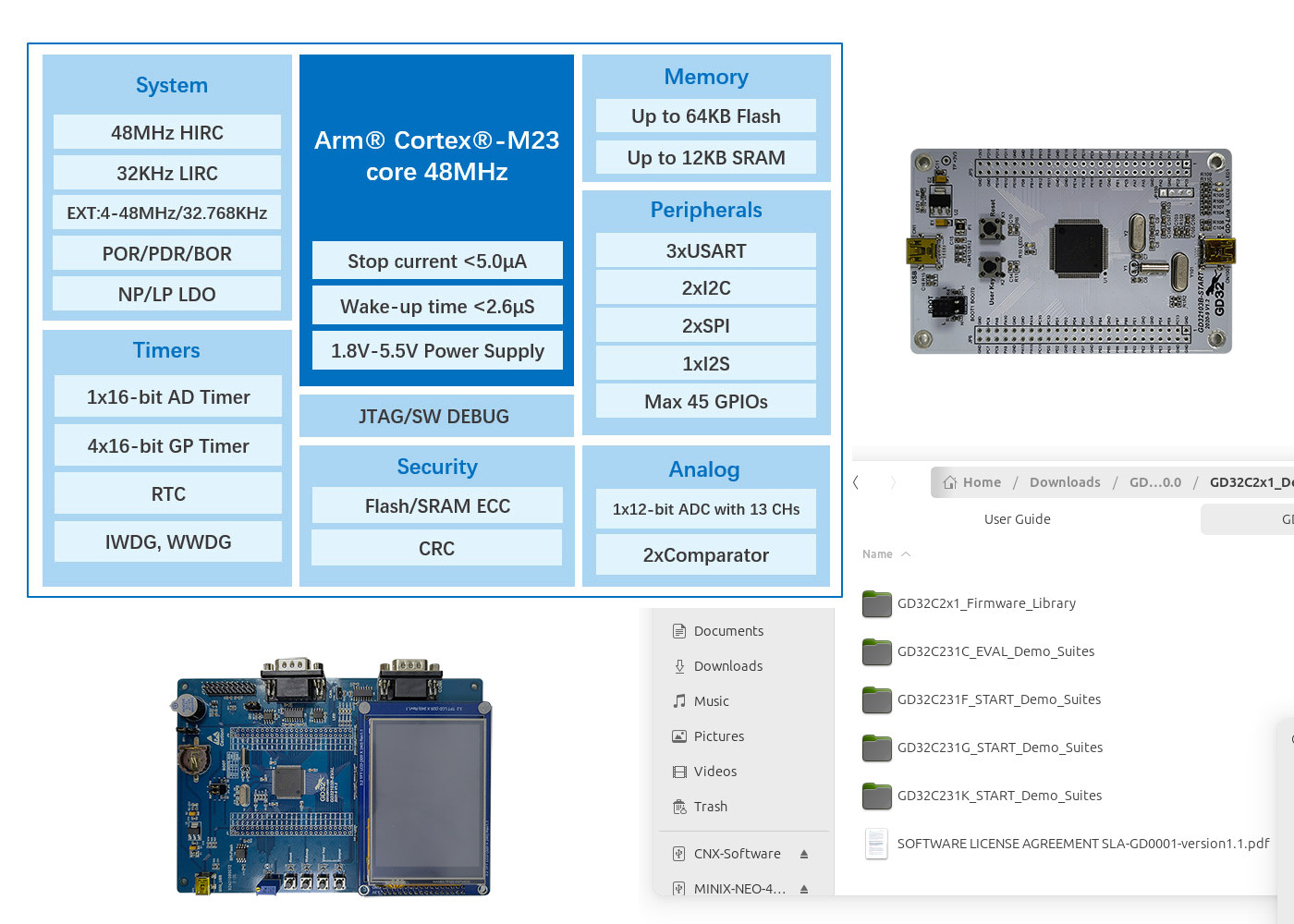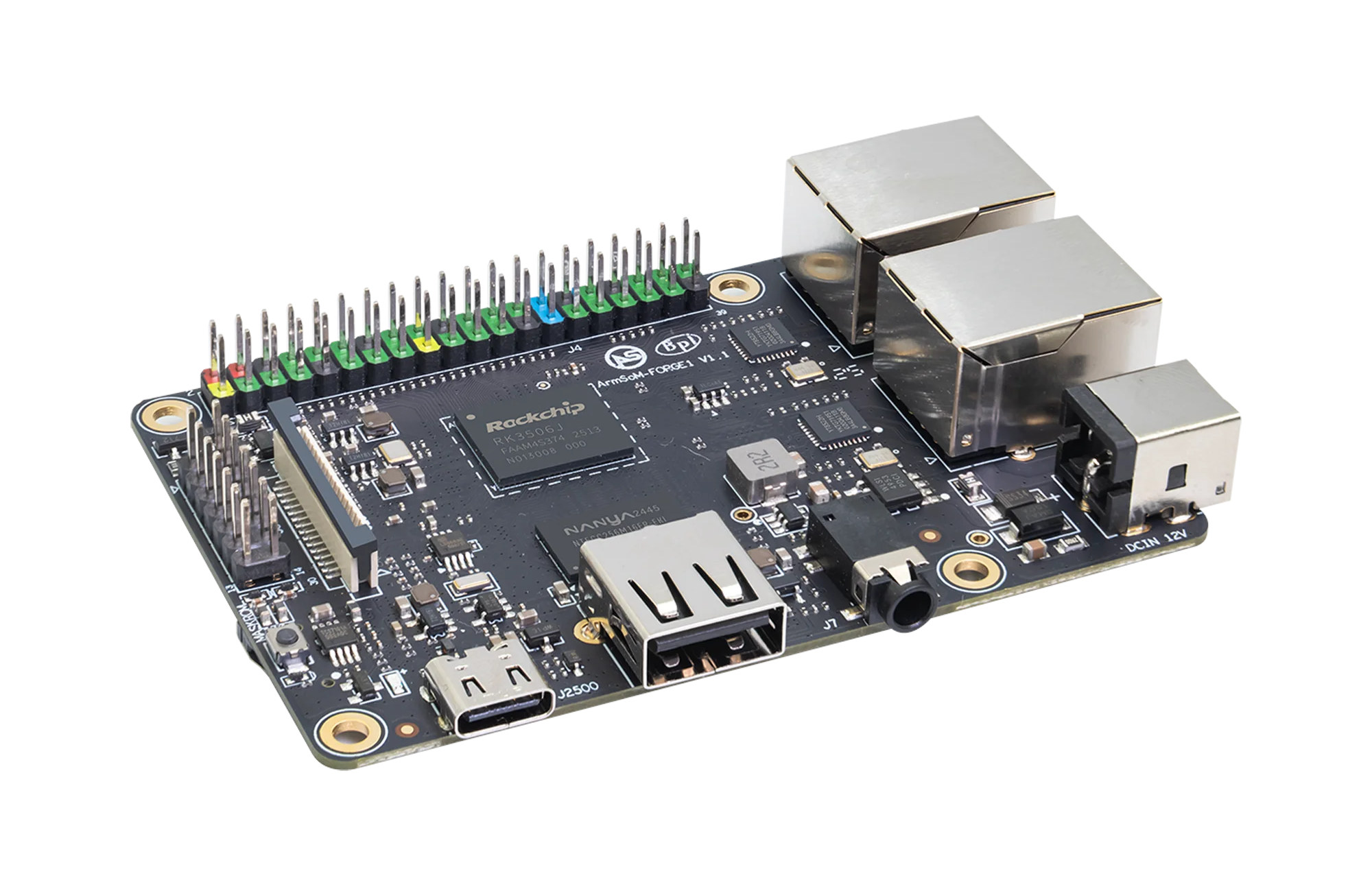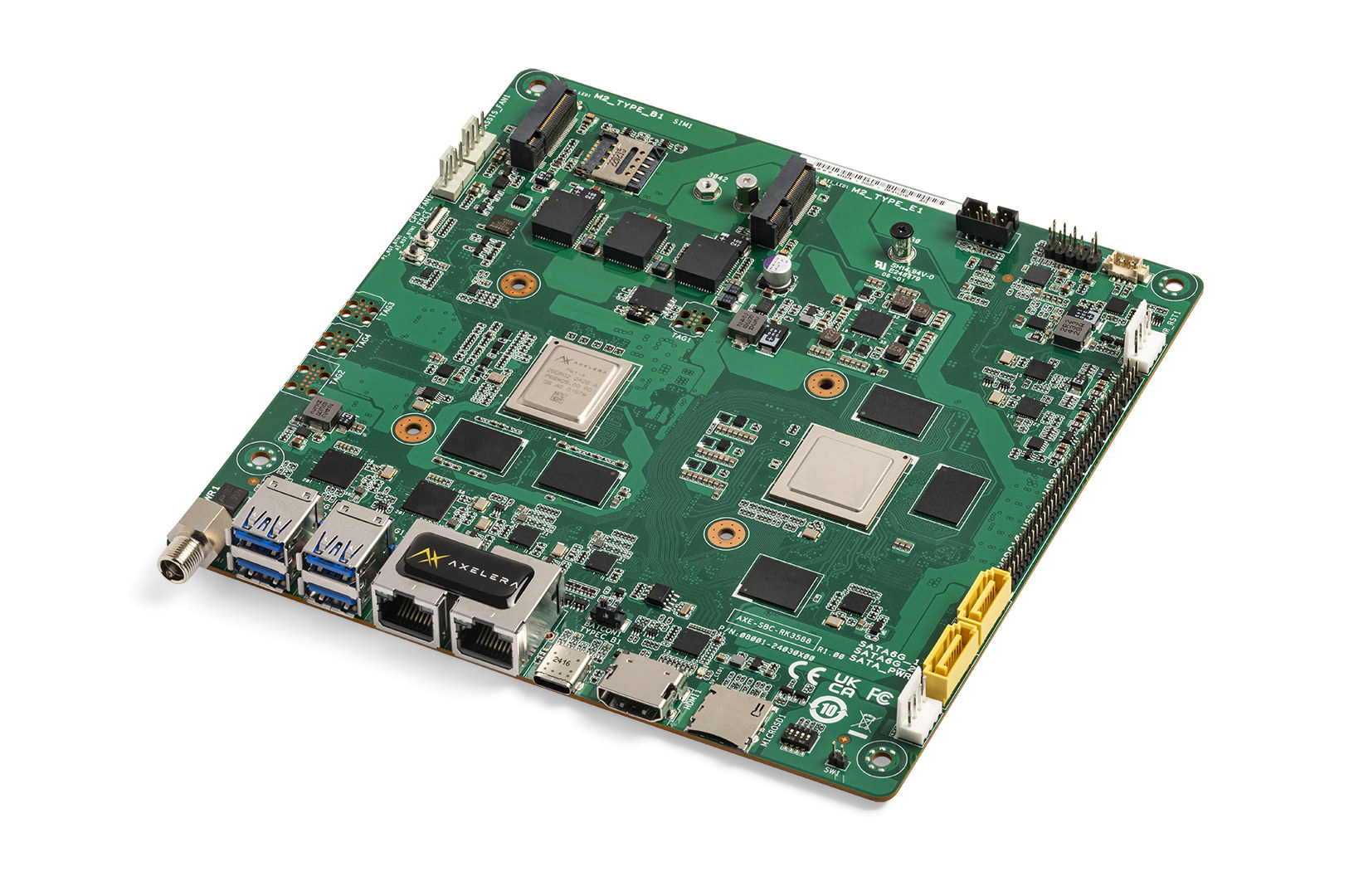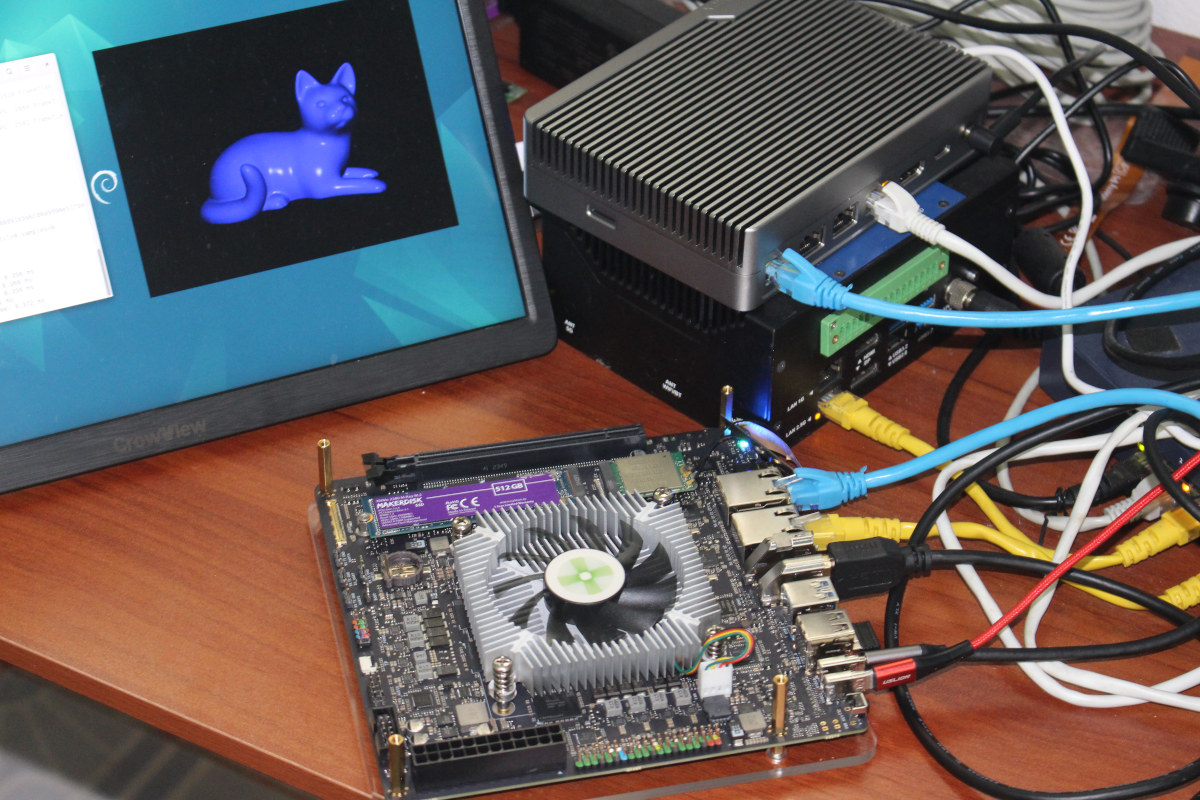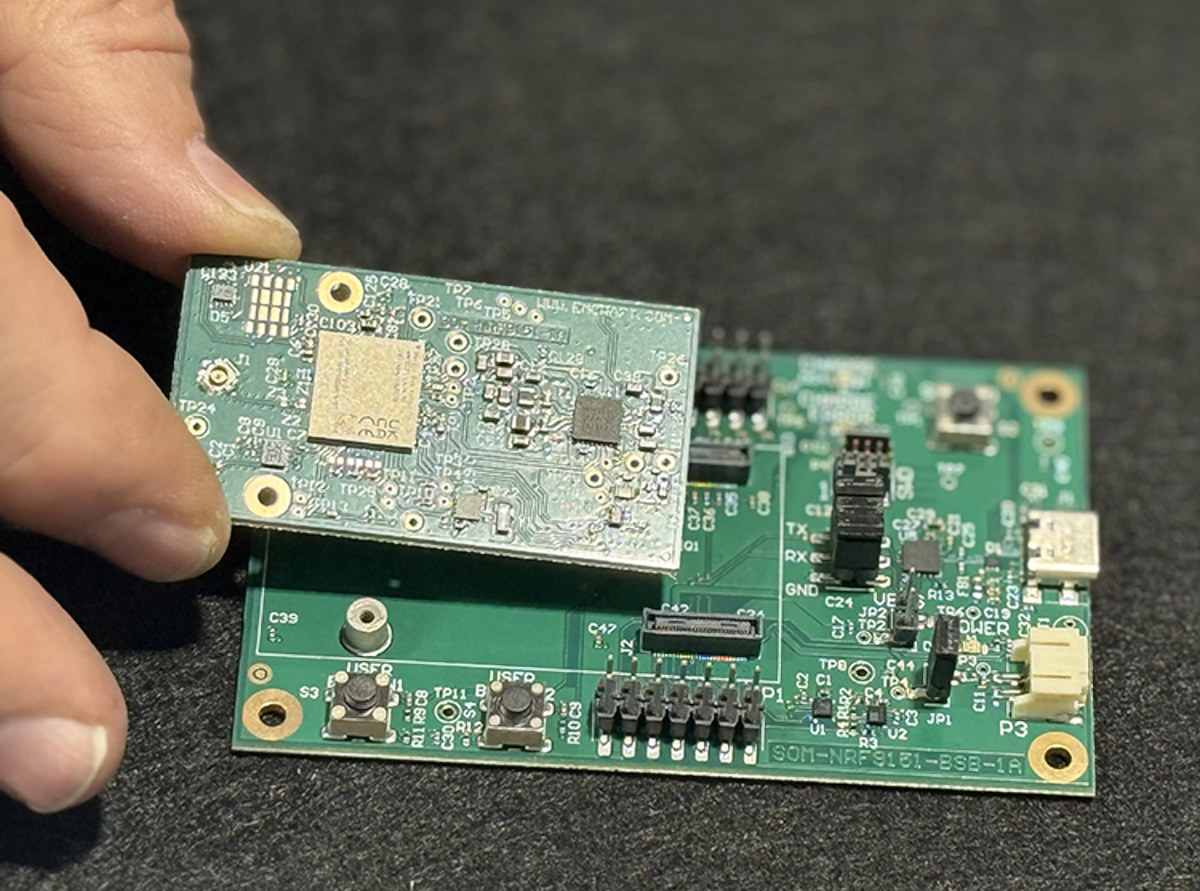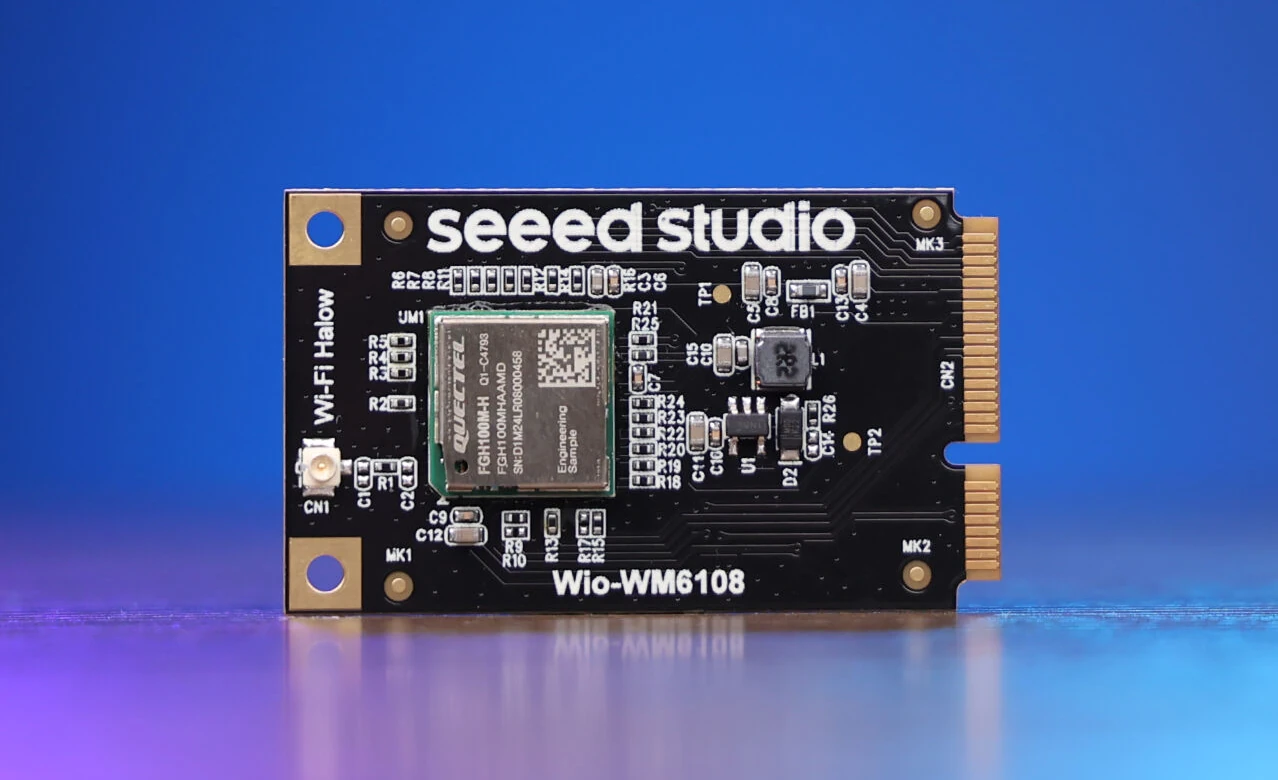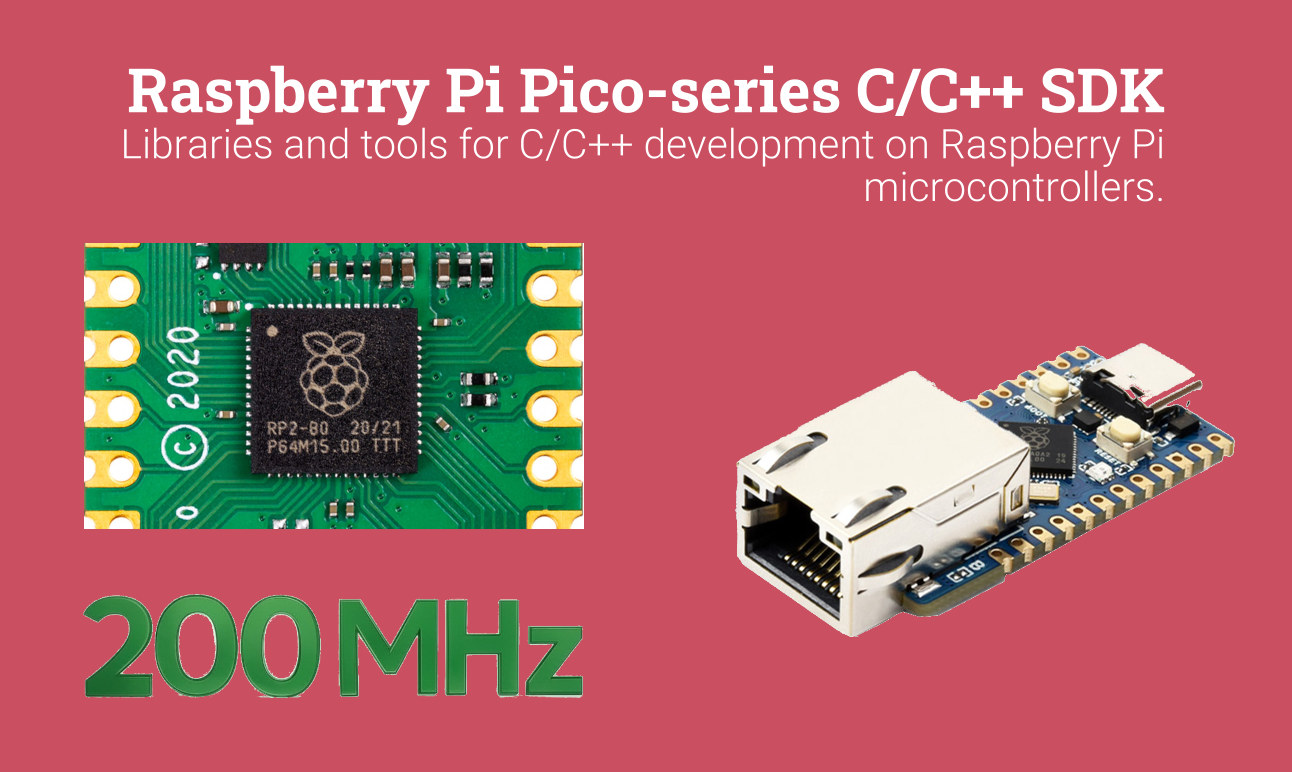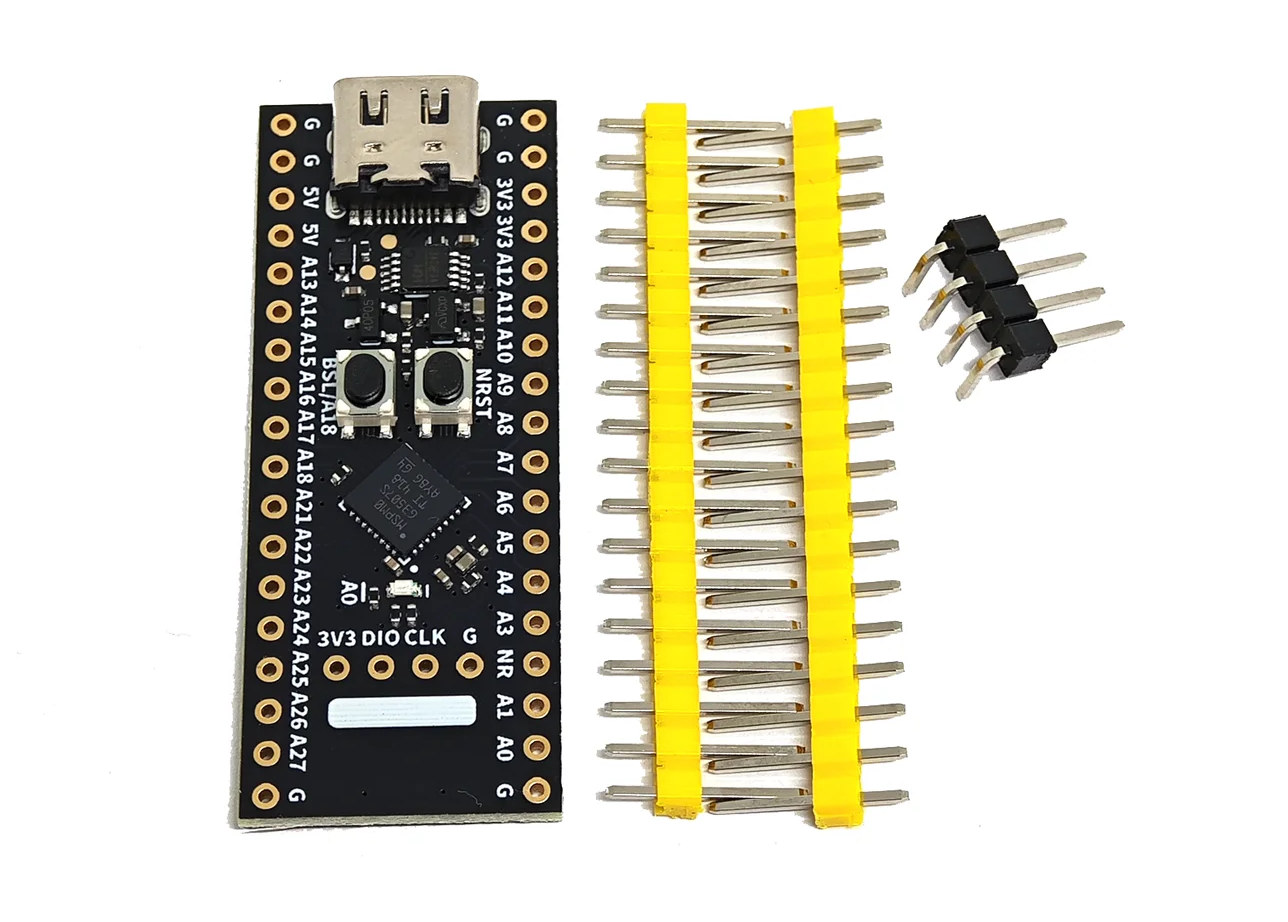GigaDevice GD32C231 entry-level microcontroller is built around a 48 MHz Arm Cortex-M23 core with up to 64KB ECC flash, 12KB ECC SRAM, and is offered in 20-pin to 48-pin packages with up to 45 GPIOs, a range of peripherals, analog inputs, and timers. The company says the GD32C231 series targets cost-effective small home appliances, BMS (Battery Management Systems), small-screen display devices, battery-powered handhelds, industrial auxiliary controls, and automotive aftermarket systems. GigaDevice GD32C231 key features and specifications: Core – Arm Cortex-M23 @ up to 48 MHz Memory – 12KB SRAM with ECC Storage – 32KB or 64KB flash with ECC Audio – 1x I2S Low-speed Peripherals Up to 45x GPIO Up to 3x USART, 2x I2C, 2x SPI Analog 12-bit ADC with 13 channels 2x analog comparators Timers 4x 16-bit general-purpose (GP) timers 16-bit Advanced (AD) timer RTC IWDG, WWDG 24-bit SysTick Misc – CRC module Supply Voltage – 2.3 to […]
$24 Banana Pi BPI-Forge1 industrial SBC is powered by Rockchip RK3506J tri-core SoC
The Banana Pi BPI-Forge1, also known as the ArmSoM Forge1, is an industrial SBC (single board computer) powered by the Rockchip RK3506J triple-core Cortex-A7 processor designed for Smart Audio, HMI, and factory automation applications. The Forge1 is equipped with 512MB RAM, 512MB NAND flash, two Fast Ethernet ports, a MIPI DSI display connector, USB Type-A and Type-C ports, an audio jack, a 40-pin GPIO header partially compatible with Raspberry Pi HATs, and a 14-pin header with speaker output, microphone input, RS-485, and CAN Bus. Banana Pi BPI-Forge1 specifications: SoC – Rockchip RK3506J CPU 3x Arm Cortex-A7 core up to 1.5 GHz Arm Cortex-M0 real-time core GPU – 2D GPU only No VPU, no NPU System Memory – 512MB DDR3L Storage 512MB SPI NAND flash MicroSD card Display Interface – 2-lane MIPI DSI connector up to 1280 x 1280@ 60FPS Audio 3.5mm audio jack Speaker and Mic via expansion header Networking […]
Axelera Metis Compute Board pairs Rockchip RK3588 SoC with 214 TOPS Metis AI accelerator
Axelera Metis Computer Board is a Rockchip RK3588 mini-ITX motherboard equipped with a Metis AIPU (AI Processing Unit) capable of delivering up to 214 TOPS, 16GB LPDDR4 memory for the CPU, and 4GB LPDDR4x RAM for the AI accelerator. I first came across the Axelera Metis AIPU in M.2 and PCIe card in 2023, and I was rather impressed with the advertised 214 TOPS of AI performance promised in this form factor and relatively affordable $149 price tag considering the price-to-performance ratio. At the time, it was still hard to source the chip and module due to limited quantities, and in 2024, it became easier to evaluate the solution with the Axelera Metis PCIe Arm AI evaluation kit based on a Firefly ITX-3588J mini-ITX motherboard equipped with a 214 TOPS Metis AIPU PCIe card. The new Metis Compute Board is similar, but in a more compact form factor since the […]
Radxa Orion O6 Preview – Part 2: Debian 12 – What works, what doesn’t
I went through an unboxing and Debian 12 installation on the Radxa Orion O6 at the end of January, but decided to work on other reviews since software support still needed to be worked on. Since then, there’s been some work done, but no new image released. After waiting for almost two months, I’ve decided to carry on with the review by testing the Debian 12 image in a way similar to the Rock 5B SBC preview I did with Debian 11 in 2022 to check what works and what doesn’t on the Orion O6 at the time of the review. That will involve testing all ports, including 5GbE networking and the PCIe slot with an (old) NVIDIA graphics card, running some benchmarks, and also trying the Debian 12 image with a self-built Linux 6.13 kernel using ACPI instead of UEFI for the default image. Orion O6 SBC benchmarks on […]
emCraft SOM-NRF9151 – A Nordic Semi nRF9151 System-on-Module with LTE-M, NB-IoT, DECT NR+, and GNSS
Better known for its Linux and uCLinux-powered system-on-modules, emCraft has just launched the SOM-NRF9151 system-on-module powered by a Nordic Semi nRF9151 Arm Cortex-M33 SiP (System-in-Package) with LTE-M, NB-IoT, and DECT NR+ connectivity, and GNSS functionality. The SoM also features a 16MB SPI flash, an nPMIC1300 for power management, a Nano SIM card slot, and a footprint for an eSIM. I/Os and power signals are exposed through two 50-pin board-to-board connectors, and the company provides a starter kit with a baseboard for evaluation. emCraft SOM-NRF9151 specifications: SiP – Nordic Semi nRF9151 CPU – Arm Cortex-M33 @ 64 MHz Memory – 256 KB SRAM Storage – 1 MB flash Wireless – LTE-M, NB-IoT, and DECT NR+ modem with GNSS 700-2200 MHz LTE bands: B1-B5, B8, B12, B13, B17-B20, B25, B26, B28, B65, B66, B85 Power Class 5 20 dBm Power Class 3 23 dBm 1.9GHz NR+ band support Certified for global operation […]
Seeed Studio launches Wi-Fi HaLow mini PCIe module for Raspberry Pi, add-on board for XIAO boards
Seeed Studio has launched two 900 MHz WiFi HaLow modules for long-range, low-power communication based on Quectel FGH100M-H: the Wio-WM6180 Wi-Fi HaLow mini-PCIe module designed to be installed in hardware such as OpenWrt routers or even Raspberry Pi SBCs, and the Wi-Fi HaLow module for Seeed Studio XIAO designed to take XIAO boards with Espressif, Raspberry Pi, or Nordic Semi microcontrollers. These solutions can be useful for Smart Home devices, industrial automation, Smart City infrastructure, Smart Agriculture, and environmental monitoring systems. The most typical use cases are WiFi HaLow cameras with up to one kilometer range. Wio-WM6180 Wi-Fi HaLow mini-PCIe Module Specifications: Quectel FGH100M-H Wi-Fi HaLow module compliant with IEEE 802.11ah standard. Chipset – Morse Micro MM6108 Wi-Fi Frequency Band – 902–928 MHz Operating mode – Access Point (AP) or Station (STA) Modulation – OFDM, BPSK, QPSK, 16QAM, 64QAM Data Rate – Up to 32.5Mbps link rate Range – Up […]
Raspberry Pi Pico SDK 2.1.1 release adds 200MHz clock option for RP2040, various Waveshare boards, new code samples
The Raspberry Pi Pico SDK 2.1.1 has just been released with official 200 MHz clock support for the Raspberry Pi RP2040 MCU, several new boards mostly from Waveshare, but also one from Sparkfun, as well as new code samples, and other small changes. Raspberry Pi RP2040 gets official 200 MHz clock support When the Raspberry Pi RP2040 was first released along with Raspberry Pi Pico in 2021, we were told the default frequency was 48 MHz, but the microcontroller could also run up to 133 MHz. Eventually, I think the Cortex-M0+ cores were clocked at 125 MHz by default, although some projects (e.g. PicoDVI) would boost the frequency up to 252 MHz. Frequencies higher than 133 Mhz were not officially supported so far, but the Pico SDK 2.1.1 changes that since the Raspberry Pi RP2040 has now been certified to run at a system clock of 200MHz when using a […]
WeAct MSPM0G3507 development board features Texas Instruments MSPM0G3507SRHBR Cortex-M0+ mixed-signal MCU
WeAct MSPM0G3507 is a BluePill-like development board equipped with Texas Instruments’ 80 MHz MSPM0G3507SRHBR Arm Cortex-M0+ mixed-signal MCU with 128KB flash and 32KB SRAM. The board features a USB-C port for power and programming, two buttons for Reset and BSL (Bootstrap Loader), a 4-pin SWD port for debugging, and two 18-pin headers for GPIOs, CAN Bus, ADC, DAC, I2C, UART, and other interfaces. The MSPM0G350x microcontroller also comes with a math accelerator for DIV, SQRT, MAC, and TRIG computations which could prove useful for control control and signal processing. WeAct MSPM0G3507 specifications: MCU – Texas Instruments MSPM0G3507 Arm Cortex-M0+ microcontroller at 80 MHz with 128KB flash, 32KB SRAM, 2x 4Msps ADC, DAC, 3x COMP, 2x OPA, CAN FD, MATHACL math accelerator USB – USB-C port for power and programming via CH340X USB to TTL chip Expansion – 2x 18-pin with power signals, I2C, SPI, GPIOs, ADC inputs, DAC, CAN Bus, […]


